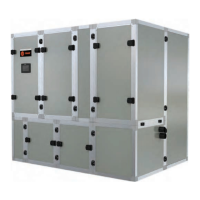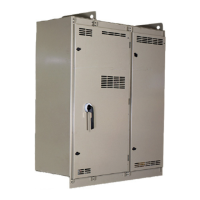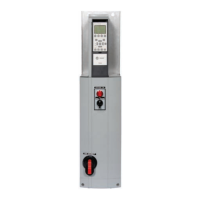PKG-SVX027D-EN
37
WARNING
Explosion Hazard!
Failure to properly regulate pressure could result in a
violent explosion, which could result in death, serious
injury, or equipment or property-only-damage.
When using dry nitrogen cylinders for pressurizing
units for leak testing, always provide a pressure
regulator on the cylinder to prevent excessively high
unit pressures. Never pressurize unit above the
maximum recommended unit test pressure as
specified in applicable unit literature.
WARNING
Hazardous Pressures!
Failure to follow instructions below could result in a
violent explosion, which could result in death or
serious injury.
If a heat source is required to raise the tank pressure
during removal of refrigerant from cylinders, use only
warm water or heat blankets to raise the tank
temperature. Do not exceed a temperature of 150°F.
Do not under any circumstances apply direct flame to
any portion of the cylinder.
CAUTION
Refrigerant at Freezing Temperature!
Direct contact with liquid refrigerant could result in
minor or moderate injury.
Avoid contact with skin. If working with refrigerant is
necessary, you MUST wear all Personal Protective
Equipment (PPE) including eye protection, safety
gloves, long sleeves, and pants. In case of contact,
treat the injury similar to frostbite. Slowly warm the
affected area with lukewarm water and seek
immediate medical attention.
NOTICE
Compressor Damage!
Failure to follow instructions below could result in
compressor failure.
If it becomes necessary to remove or recharge the
system with refrigerant, it is important that the
following actions are taken:
• To prevent cross contamination of refrigerants
and oils, use only dedicated R-410A service
equipment.
• Disconnect unit power before evacuation and do
not apply voltage to compressor while under vacuum.
• Due to presence of POE oil, do not leave the
system open for more than 1 hour.
• Allow the crankcase heater to operate a minimum
of 24 hours before starting compressors.
• Do not allow liquid refrigerant to enter the suction
line.
• Do not allow excessive liquid accumulation in the
liquid lines.
• Do not operate the compressors without the
proper level of refrigerant in each circuit.
Charging and Wiring the Unit
WARNING
Live Electrical Components!
Failure to follow all electrical safety precautions when
exposed to live electrical components could result in
death or serious injury.
When it is necessary to work with live electrical
components, have a qualified licensed electrician or
other individual who has been properly trained in
handling live electrical components perform these
tasks.
Use the following steps to charge and wire the system:
1. Verify system leak check and evacuation are complete
before adding refrigerant. See “Refrigerant Leak Test
Procedure,” p. 66 and “System Evacuation
Procedures,” p. 68.
2. While unit is evacuating, place starter/control module
into position, but do not connect to main power until all
work is complete.
3. Terminate compressor power connections, control
harness, and chassis communication harness. Control
harnesses are color coded for easy installation.
Installation - Mechanical

